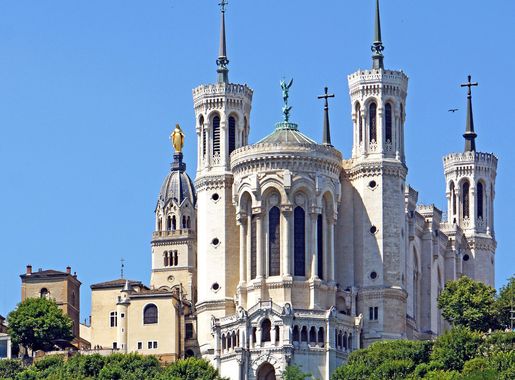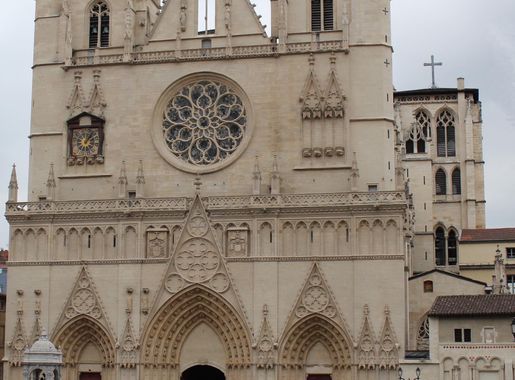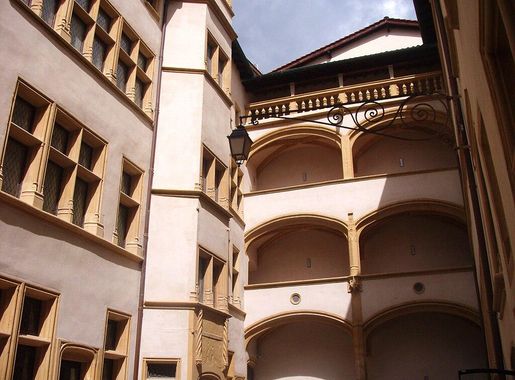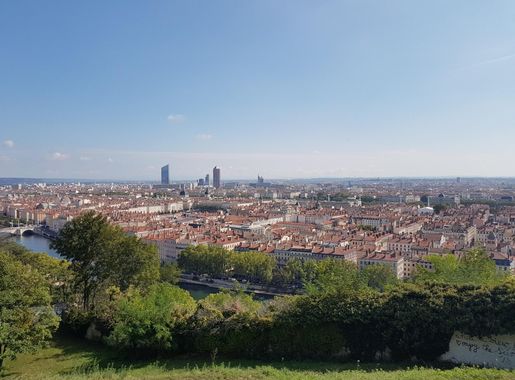
Vieux Lyon: A Journey Through Time in the Heart of France
Vieux Lyon: Explore cobblestone streets, Renaissance architecture, and delicious cuisine in the heart of Lyon's historic district.
Step into Vieux Lyon, the oldest district in the city of Lyon, and be transported back in time. This UNESCO World Heritage site is a labyrinth of narrow, cobblestone streets, Renaissance buildings, and hidden passageways known as traboules. The district is divided into three sections: Saint Jean, Saint Paul, and Saint Georges, each offering its own unique charm and historical significance. As you wander through the streets of Vieux Lyon, you'll find a multitude of charming boutiques, artisanal shops, and cozy cafes. The area is also home to several museums, including the Gadagne Museum, which delves into the history of Lyon, and the Miniature and Cinema Museum, showcasing intricate miniatures and film props. Don't miss the impressive Saint Jean Cathedral, a Gothic masterpiece that stands as a testament to the city's rich architectural heritage. Food lovers will be delighted by the plethora of traditional Lyonnais bouchons scattered throughout Vieux Lyon. These intimate restaurants serve hearty, local dishes such as quenelles, sausages, and duck pâté. After a satisfying meal, take a leisurely stroll along the banks of the Saône River, where you can enjoy picturesque views of the city and the distant Fourvière Hill, crowned by the stunning Basilica of Notre-Dame de Fourvière.
Local tips in Vieux Lyon
- Wear comfortable shoes to navigate the cobblestone streets and steep hills.
- Visit the traboules early in the morning or late in the afternoon to avoid crowds.
- Try local specialties like quenelles and sausages at a traditional bouchon.
- Check the opening hours of museums and attractions in advance, as they can vary.
- Take a guided walking tour to learn about the history and architecture of Vieux Lyon.
Vieux Lyon: A Journey Through Time in the Heart of France
Step into Vieux Lyon, the oldest district in the city of Lyon, and be transported back in time. This UNESCO World Heritage site is a labyrinth of narrow, cobblestone streets, Renaissance buildings, and hidden passageways known as traboules. The district is divided into three sections: Saint Jean, Saint Paul, and Saint Georges, each offering its own unique charm and historical significance. As you wander through the streets of Vieux Lyon, you'll find a multitude of charming boutiques, artisanal shops, and cozy cafes. The area is also home to several museums, including the Gadagne Museum, which delves into the history of Lyon, and the Miniature and Cinema Museum, showcasing intricate miniatures and film props. Don't miss the impressive Saint Jean Cathedral, a Gothic masterpiece that stands as a testament to the city's rich architectural heritage. Food lovers will be delighted by the plethora of traditional Lyonnais bouchons scattered throughout Vieux Lyon. These intimate restaurants serve hearty, local dishes such as quenelles, sausages, and duck pâté. After a satisfying meal, take a leisurely stroll along the banks of the Saône River, where you can enjoy picturesque views of the city and the distant Fourvière Hill, crowned by the stunning Basilica of Notre-Dame de Fourvière.
Iconic landmarks you can’t miss
Cathédrale Saint-Jean-Baptiste
Discover the breathtaking Cathédrale Saint-Jean-Baptiste, a majestic blend of Gothic and Romanesque architecture in the heart of Lyon, rich in history and beauty.

Jardin Archéologique
Explore the historical beauty of Jardin Archéologique in Lyon, where nature and ancient Roman heritage intertwine for a serene escape.
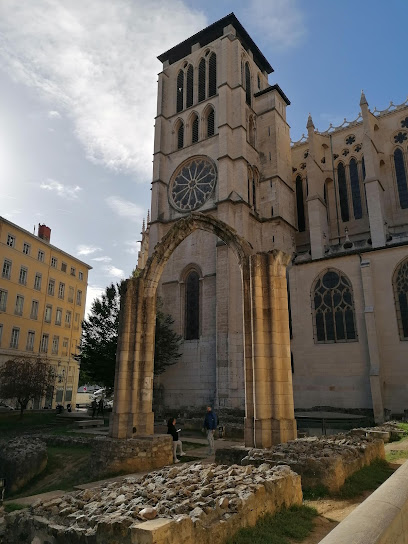
Maison Thomassin
Discover the breathtaking beauty of Maison Thomassin, a heritage building in Lyon that encapsulates the city's rich history and architectural grandeur.
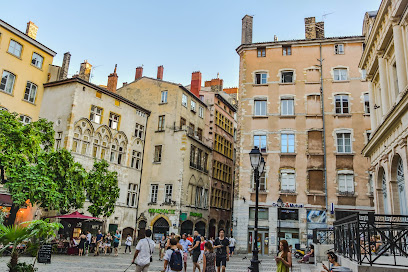
Fontaine Saint Jean
Discover the enchanting Fontaine Saint Jean, a historical monument in Lyon that beautifully blends art, culture, and local life in a picturesque setting.
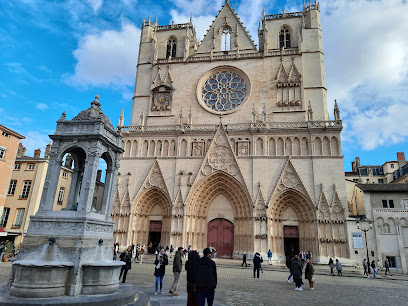
Escalier Basilique de Fourvière
Experience the stunning beauty and rich history of the Escalier Basilique de Fourvière, a must-visit attraction in Lyon, France.
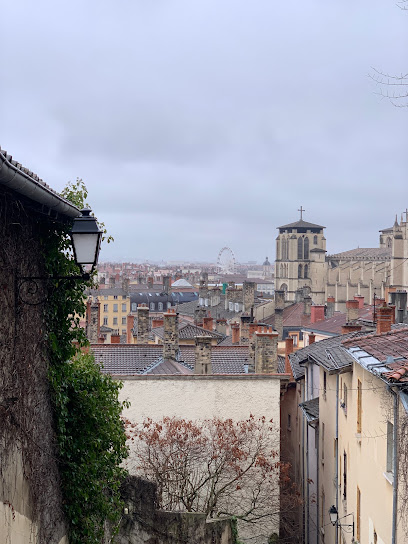
Quartier Saint-Paul
Discover the enchanting Quartier Saint-Paul in Lyon, a UNESCO World Heritage site with stunning Renaissance architecture and vibrant local culture.
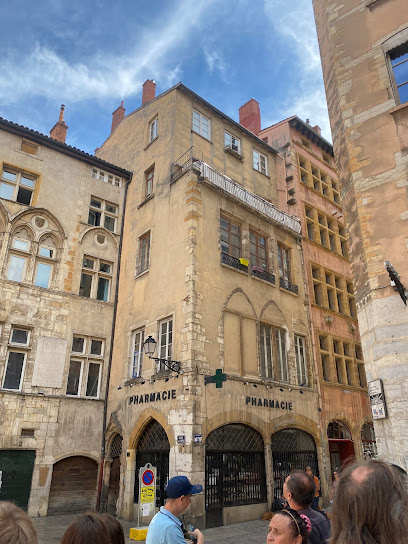
Palais Saint-Jean
Explore the majestic Palais Saint-Jean in Lyon, a historic museum showcasing the city's rich cultural heritage and exquisite architectural beauty.
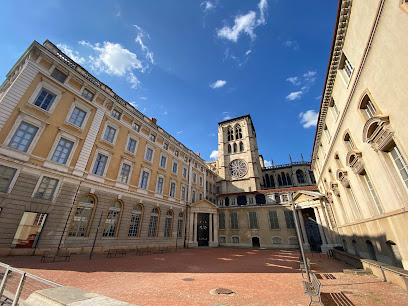
Quartier Saint-Georges
Experience the historical charm and vibrant culture of Quartier Saint-Georges in Lyon, a UNESCO World Heritage site filled with stunning architecture and delightful eateries.
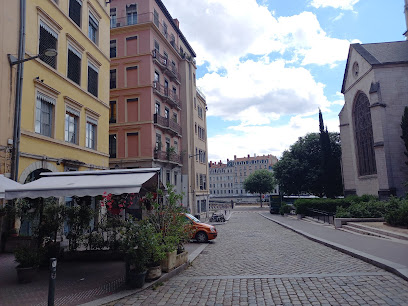
Eingang einer Traboule
Explore the enchanting traboules of Lyon, where history, architecture, and local culture intertwine in secret passageways.
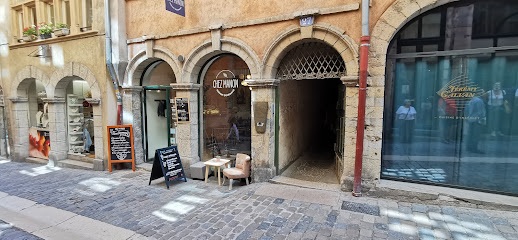
Vieux Lyon
Explore Vieux Lyon: A UNESCO World Heritage site, rich in Renaissance architecture, vibrant culture, and delectable Lyonnaise cuisine.
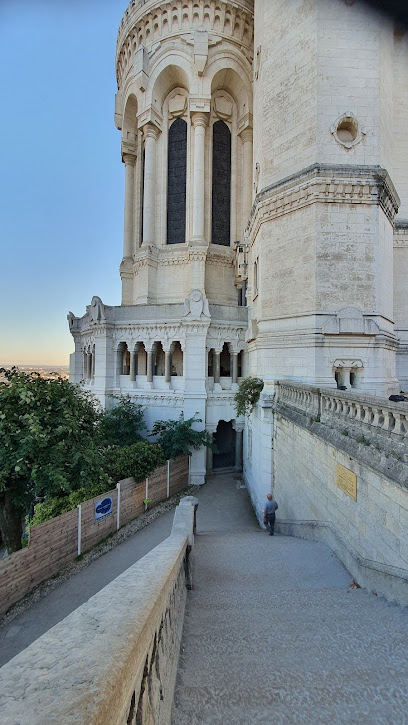
Unmissable attractions to see
Musée Cinéma et Miniature
Experience the enchanting world of cinema and intricate miniatures at Musée Cinéma et Miniature in Lyon, a captivating journey for film enthusiasts.
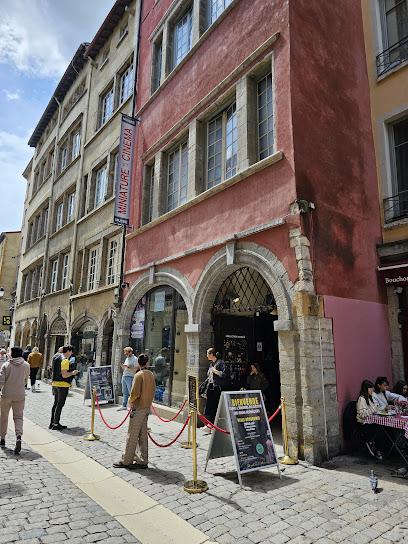
Jardin des Curiosités
Explore the serene beauty and artistic charm of Jardin des Curiosités in Lyon, a hidden gem offering stunning views and vibrant landscapes.
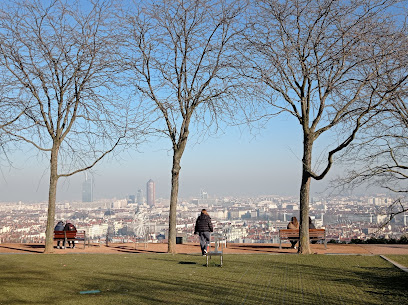
Quartier Saint-Georges
Explore the rich history and vibrant culture of Quartier Saint-Georges, a picturesque neighborhood in the heart of Lyon with stunning architecture and delightful cuisine.
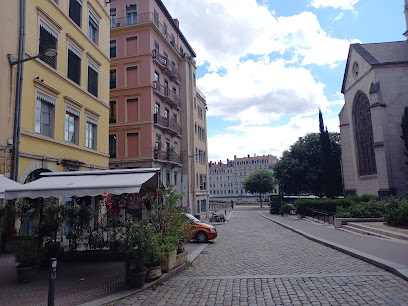
Eingang einer Traboule
Dive into the enchanting world of Lyon's Traboules, where history, architecture, and hidden treasures await every curious traveler.
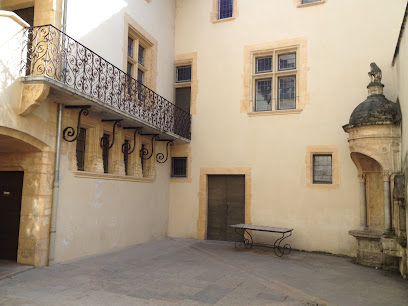
Le Tronc de Lyon
Explore the captivating charm and rich history of Le Tronc de Lyon, a must-see tourist attraction in the heart of Lyon, France.
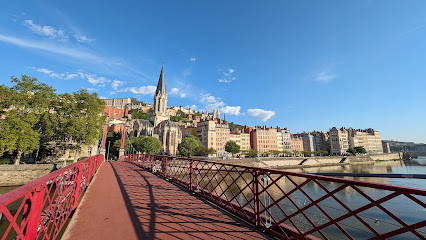
Lyon
Discover Lyon, France’s gastronomic capital, where rich history meets vibrant culture and culinary excellence awaits at every corner.

Essential places to dine
Chez Grand-Mère
Discover authentic French cuisine in Lyon at Chez Grand-Mère - a charming restaurant celebrating local flavors and culinary traditions.
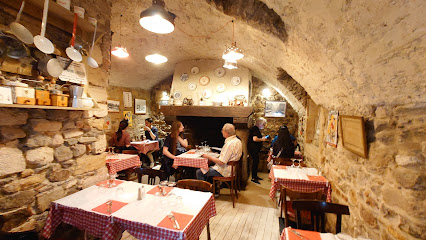
RESTAURANT LE VIEUX LYON
Discover authentic French cuisine in the heart of Lyon at Restaurant Le Vieux Lyon - where tradition meets flavor.
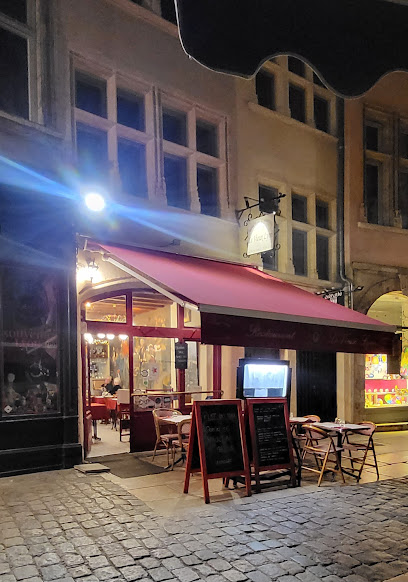
Notre Maison
Discover authentic French cuisine at Notre Maison in Lyon - where every dish tells a story.

La Nef Des Fous
Savor the best of French cuisine at La Nef Des Fous in Lyon – where tradition meets innovation in every delightful dish.
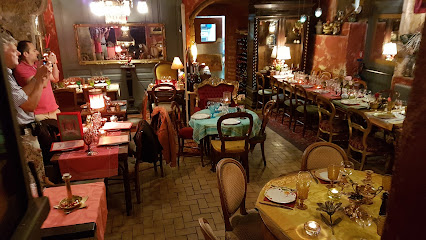
Bouchon Rouge
Experience authentic Lyonnaise cuisine at Bouchon Rouge - where tradition meets taste in the heart of France.

Le Cabaretier
Savor the essence of traditional French cuisine at Le Cabaretier in Lyon - where every meal is a celebration of flavor and culture.

Le Bœuf d'Argent
Discover exquisite French cuisine at Le Bœuf d'Argent in Lyon, where culinary tradition meets modern elegance.
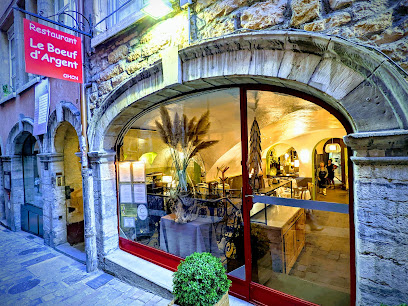
Restaurant La Chimère
Experience authentic French cuisine in Lyon at Restaurant La Chimère, where every dish tells a story of tradition and taste.
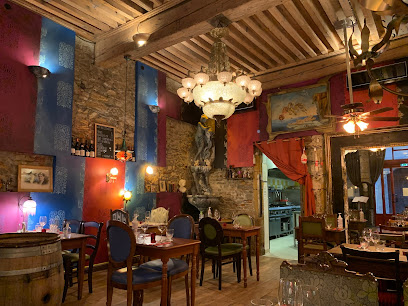
Les Adrets
Experience authentic French cuisine at Les Adrets in Lyon – where culinary tradition meets modern charm.
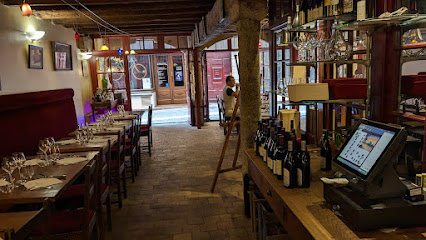
Restaurant à la Traboule
Discover authentic French cuisine in the heart of Lyon at Restaurant à la Traboule - where tradition meets flavor.
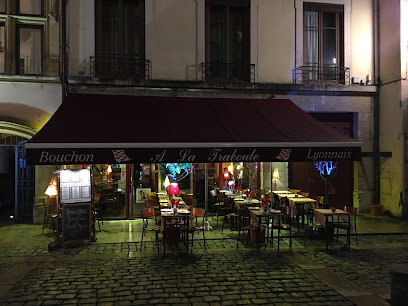
Markets, malls and hidden boutiques
Silk Saint Georges
Discover the enchanting world of silk at Silk Saint Georges, where fashion meets the rich heritage of Lyon's silk industry.
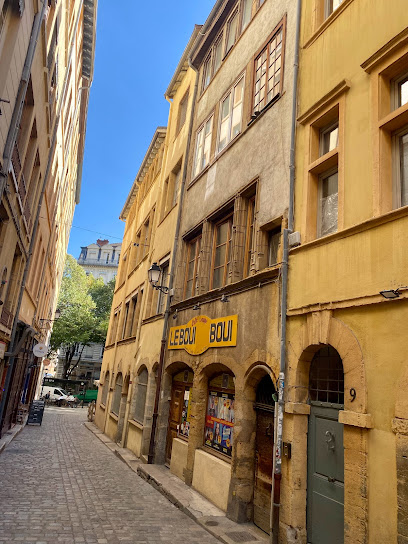
Mandragore
Explore Mandragore in Lyon, a magical gift shop offering unique treasures, from children's clothing to rare books, for an unforgettable shopping experience.
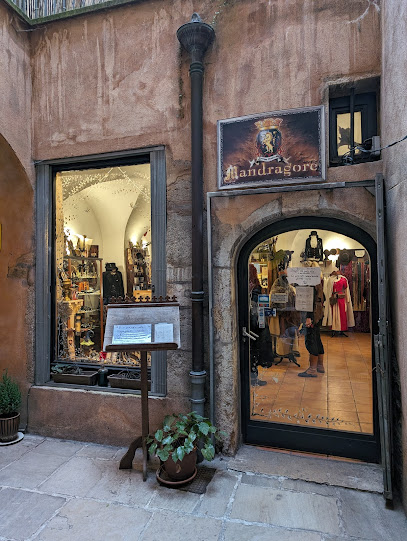
Pylones
Explore Pylones in Lyon for a delightful selection of quirky gifts, stylish accessories, and unique home decor that make perfect souvenirs.
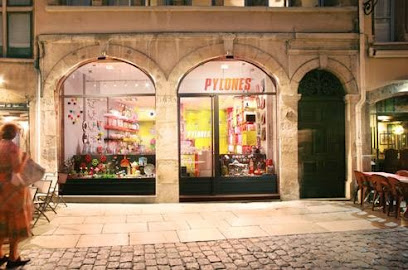
CathAm Soie
Explore CathAm Soie, Lyon's premier destination for unique silk and tweed fashion accessories that embody exquisite craftsmanship and local elegance.
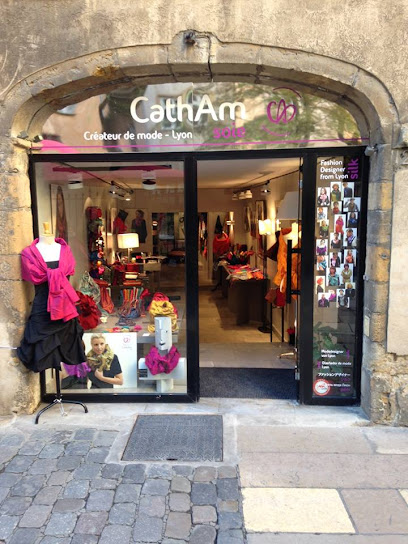
BROCHIER SOIERIES Vieux Lyon
Discover the art of silk weaving at Brochier Soieries in Vieux Lyon, where tradition meets elegance in every fabric.
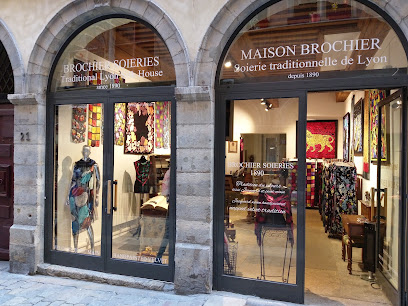
Souvenirs de Lyon. Com
Discover the essence of Lyon at Souvenirs de Lyon, your go-to destination for authentic local delicacies and artisanal gifts.
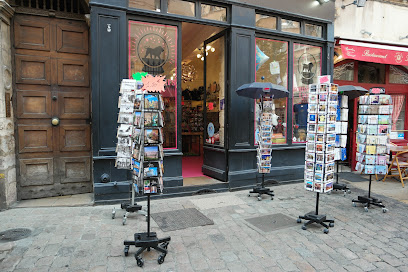
Souvenir de lyon
Discover unique souvenirs, local delicacies, and charming keepsakes at Souvenir de Lyon, the perfect stop for every traveler in Lyon.
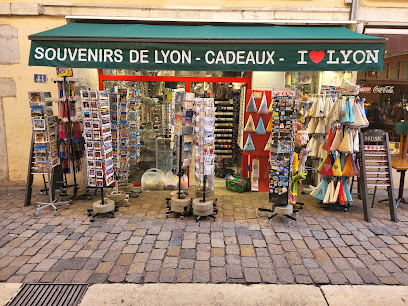
couleurs ethniques by boutique new delhi lyon
Explore the vibrant ethnic fashion at Couleurs Ethniques, a unique boutique in Lyon showcasing men's and women's clothing with cultural flair.
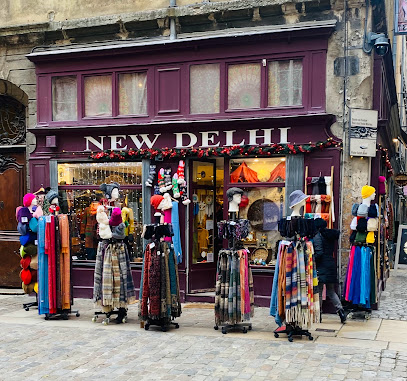
L'univers de Guignol et du Petit Prince - Boutique de souvenirs du Vieux Lyon - Musée
Explore L'univers de Guignol et du Petit Prince in Vieux Lyon – a delightful gift shop and museum celebrating French puppetry and culture.
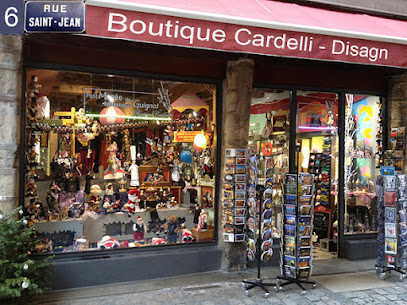
Von Dutch
Discover unique fashion at Von Dutch, a trendy clothing store in Lyon, perfect for stylish tourists seeking quality and flair.
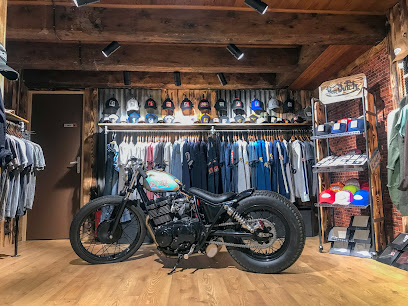
Seek & Find(e)
Explore the charm of Seek & Find(e), a unique gift shop in Lyon offering local crafts and souvenirs that embody the city's rich culture.
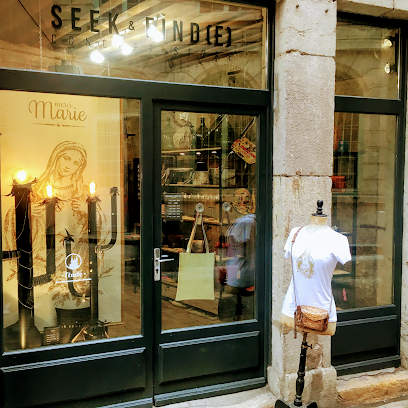
Boutique Curiosités
Discover unique women's fashion at Boutique Curiosités in Lyon, showcasing a blend of modern elegance and classic style.
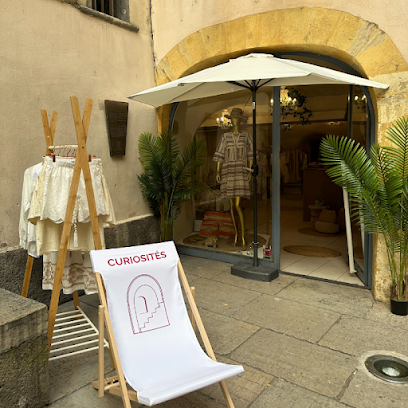
Concept Store du Vieux-Lyon
Explore unique gifts and local treasures at the Concept Store du Vieux-Lyon, a charming destination for tourists in the heart of Lyon.
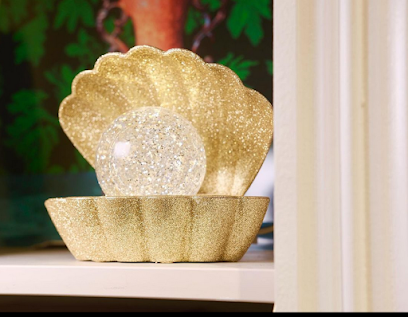
Essential bars & hidden hideouts
The Elephant & Castle
Experience the best of British pub culture in Lyon at The Elephant & Castle, where hearty dishes meet a lively bar atmosphere.
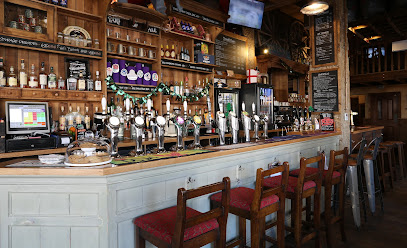
Berthom Old Lyon
Discover Berthom Old Lyon, where local beers and a vibrant atmosphere create the perfect setting for a memorable night out.
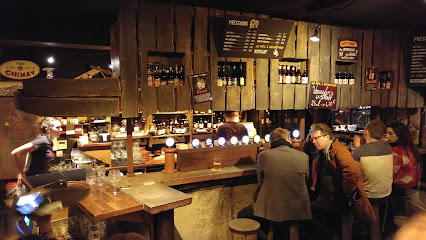
The Smoking Dog
Discover the vibrant atmosphere of The Smoking Dog, a must-visit pub in Lyon for a taste of local nightlife and delicious drinks.

Big White
Experience the vibrant nightlife at Big White, a cozy bar in Lyon offering a diverse drink menu and a welcoming atmosphere for all visitors.
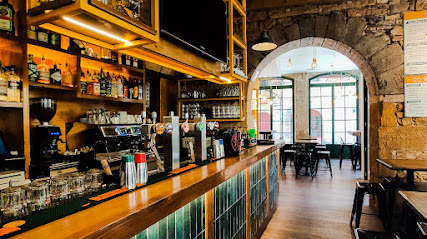
Le Pub Danois
Discover the lively atmosphere of Le Pub Danois in Lyon, where great drinks and local culture come together along the beautiful Rhône River.
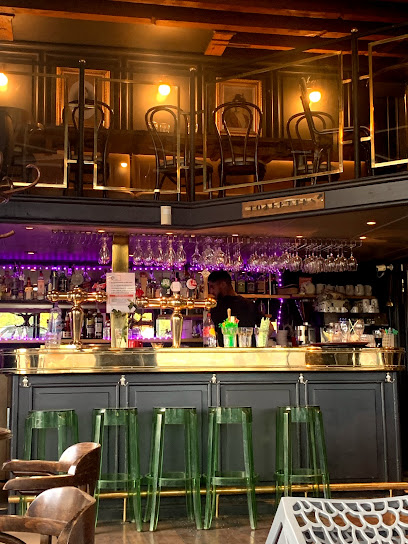
Bar Le Florian, Cocktails & Spirits
Experience the vibrant cocktail culture of Lyon at Bar Le Florian, where expertly crafted drinks meet a lively atmosphere.
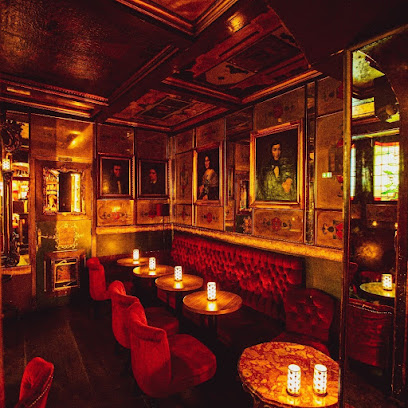
Betty's Bar
Discover Betty's Bar in Lyon, where delicious bagels, gourmet hamburgers, and craft beers create a unique dining experience in a vibrant atmosphere.
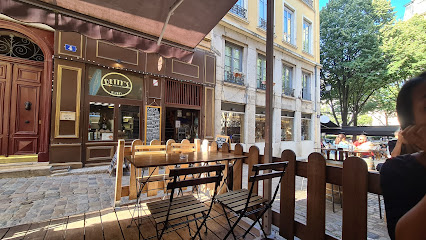
Look Bar
Discover the vibrant atmosphere of Look Bar in Lyon, where vinyl music and unique decor create the perfect backdrop for a memorable night out.
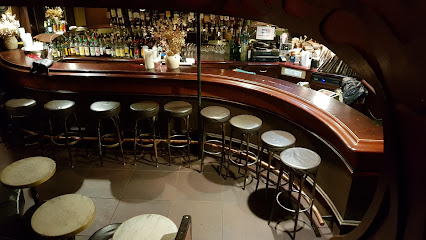
La Fonderie
Discover La Fonderie in Lyon: a cocktail bar offering exquisite drinks and a lively atmosphere by the beautiful Rhône River.
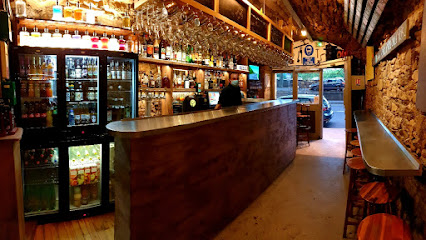
Black Hole
Experience the vibrant nightlife at Black Hole, where craft beers, cocktails, and delicious tapas blend for an unforgettable evening in Lyon.
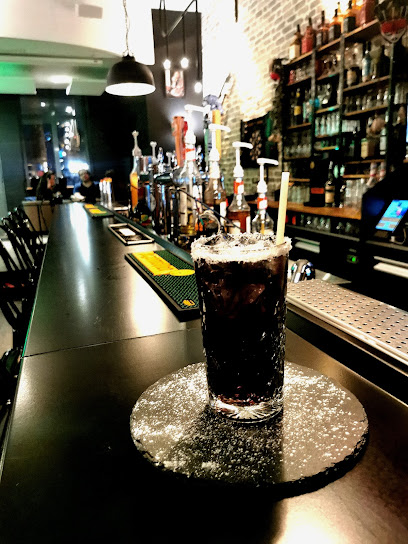
Local Phrases
-
- HelloBonjour
[bohn-zhoor] - GoodbyeAu revoir
[oh ruh-vwahr] - YesOui
[wee] - NoNon
[nohn] - Please/You're welcomeS'il vous plaît
[see voo pleh] - Thank youMerci
[mehr-see] - Excuse me/SorryExcusez-moi
[ehk-skyoo-zay mwah] - How are you?Comment ça va?
[koh-mohn sah vah] - Fine. And you?Bien. Et vous?
[byan. ay voo] - Do you speak English?Parlez-vous anglais?
[par-lay voo ahn-glay] - I don't understandJe ne comprends pas
[zhuh nuh kohm-prahnd pah]
- HelloBonjour
-
- I'd like to see the menu, pleaseJe voudrais voir la carte, s'il vous plaît
[zhuh voo-dray vwahr lah kart, see voo pleh] - I don't eat meatJe ne mange pas de viande
[zhuh nuh mahnj pah duh vyand] - Cheers!Santé!
[sahn-tay] - I would like to pay, pleaseJe voudrais payer, s'il vous plaît
[zhuh voo-dray pay-ay, see voo pleh]
- I'd like to see the menu, pleaseJe voudrais voir la carte, s'il vous plaît
-
- Help!Au secours!
[oh suh-coor] - Go away!Allez-vous en!
[ah-lay vooz ahn] - Call the Police!Appelez la police!
[ah-pay-lay lah poh-lees] - Call a doctor!Appelez un médecin!
[ah-pay-lay uh mayd-sahn] - I'm lostJe suis perdu
[zhuh swee pair-doo] - I'm illJe suis malade
[zhuh swee mah-lahd]
- Help!Au secours!
-
- I'd like to buy...Je voudrais acheter...
[zhuh voo-dray ah-shay] - I'm just lookingJe regarde juste
[zhuh ruh-gahrd jehst] - How much is it?Combien ça coûte?
[kohm-byen sah koot] - That's too expensiveC'est trop cher
[say troh shair] - Can you lower the price?Pouvez-vous baisser le prix?
[poo-vey voo bess-ay luh pree]
- I'd like to buy...Je voudrais acheter...
-
- What time is it?Quelle heure est-il?
[kehl er ay eel] - It's one o'clockIl est une heure
[eel ay oon er] - Half past (10)Dix heures et demie
[dees er ay duh-mee] - MorningMatin
[mah-tan] - AfternoonAprès-midi
[ah-pray mee-dee] - EveningSoir
[swahr] - YesterdayHier
[ee-air] - TodayAujourd'hui
[oh-zhoor-dwee] - TomorrowDemain
[duh-mahn] - 1Un
[uhn] - 2Deux
[duh] - 3Trois
[twah] - 4Quatre
[ka-truh] - 5Cinq
[sank] - 6Six
[sees] - 7Sept
[sept] - 8Huit
[whee] - 9Neuf
[nuhf] - 10Dix
[dees]
- What time is it?Quelle heure est-il?
-
- Where's a/the...?Où est...?
[oo ay] - What's the address?Quelle est l'adresse?
[kehl ay lah-dress] - Can you show me (on the map)?Pouvez-vous me montrer (sur la carte)?
[poo-vey voo muh mohn-tray (soor lah kart)] - When's the next (bus)?Quand est le prochain (bus)?
[kahnd ay luh proh-shan (boos)] - A ticket (to ....)Un billet (pour ...)
[uhn bee-yay (poor)]
- Where's a/the...?Où est...?
History of Vieux Lyon
-
Vieux Lyon, or Old Lyon, traces its origins back to the Roman period when it was known as Lugdunum, the capital of Gaul. Established in 43 BC, Lugdunum became a thriving urban center due to its strategic location at the confluence of the Rhône and Saône rivers. The remnants of Roman architecture, including the ancient theatre and the Temple of Augustus, are testaments to its historical significance.
-
During the Renaissance, particularly in the 16th century, Vieux Lyon became a hub for the silk trade, which deeply influenced the city's economy and culture. The construction of the famous traboules, hidden passageways connecting streets and courtyards, facilitated the transport of silk and became a distinctive architectural feature. This era established Lyon as a key player in European textile production.
-
The 16th and 17th centuries were marked by religious conflicts between Catholics and Protestants, affecting Vieux Lyon significantly. The city was a site of intense battles, and the influence of the Catholic Church was prominent, leading to the establishment of numerous churches, including the grand Basilica of Notre-Dame de Fourvière, which overlooks the neighbourhood.
-
By the 19th century, Vieux Lyon experienced significant changes due to the Industrial Revolution. Factories began to emerge, and the population grew as people moved to the city for work. Despite this industrialization, Vieux Lyon retained its historical charm, with many buildings from the Renaissance period preserved, showcasing the city’s rich architectural heritage.
-
In 1998, Vieux Lyon was classified as a UNESCO World Heritage Site, recognizing its historical and architectural significance. This designation has helped preserve the neighbourhood's unique character, leading to restoration projects that maintain the integrity of its Renaissance buildings and the vibrant atmosphere that attracts visitors from around the world.
Vieux Lyon Essentials
-
Vieux Lyon is easily accessible from other neighborhoods in Lyon via public transport. The metro line D (the green line) connects to Vieux Lyon with a dedicated station named Vieux Lyon - Cathédrale Saint-Jean. Trains from the Lyon Part-Dieu station and the Lyon Perrache station also serve the area. Additionally, several bus lines operate nearby, including line 31, which provides direct access to the neighborhood.
-
Vieux Lyon is a compact area best explored on foot. The narrow streets and historic architecture make walking a delightful experience. For longer distances, the metro and buses are convenient options. Bicycles can be rented through the local Vélo'v bike-sharing program, with stations available throughout the city. Taxis and ride-sharing services like Uber are also readily accessible.
-
Vieux Lyon is generally safe for tourists, but caution is always advised. Petty crimes, such as pickpocketing, can occur, especially in crowded areas like Place du Gouvernement and near popular attractions. It is advisable to keep personal belongings secure and be aware of your surroundings, particularly during busy times.
-
In case of emergency, dial 112 for police, fire, or medical assistance in France. Local hospitals and clinics are available in and around Vieux Lyon. It is recommended to have travel insurance that covers medical emergencies. For minor health issues, pharmacies are located throughout the neighborhood, where you can purchase over-the-counter medications.
-
Fashion: Do dress comfortably and stylishly, as Lyon is known for its fashion sense. Avoid overly casual attire in finer dining establishments. Religion: Do be respectful when visiting churches, such as the Basilica of Notre-Dame de Fourvière; cover your shoulders and knees. Public Transport: Do validate your ticket before boarding public transport. Don't play loud music or disturb other passengers. Greetings: Do greet locals with a friendly 'Bonjour' when entering shops or restaurants. Eating & Drinking: Do try local dishes and beverages like quenelles and Beaujolais wine. Don't eat or drink in places where it is prohibited, such as on public transport.
-
To experience Vieux Lyon like a local, visit the traboules, which are hidden passageways that connect the streets and offer a unique insight into the city’s history. Try to dine at traditional bouchons, which serve authentic Lyonnaise cuisine, and don’t hesitate to engage with the locals. They are often eager to share their love for the city and recommend hidden gems. Additionally, consider visiting during the Festival of Lights in December for a truly magical experience.
Nearby Cities to Vieux Lyon
-
Things To Do in Grenoble
-
Things To Do in Annecy
-
Things To Do in Geneva
-
Things To Do in Lausanne
-
Things To Do in Vevey
-
Things To Do in Dijon
-
Things To Do in Montreux
-
Things To Do in Avignon
-
Things To Do in Nîmes
-
Things To Do in Zermatt
-
Things To Do in Turin
-
Things To Do in Bern
-
Things To Do in Thun
-
Things To Do in Montpellier
-
Things To Do in Murren

